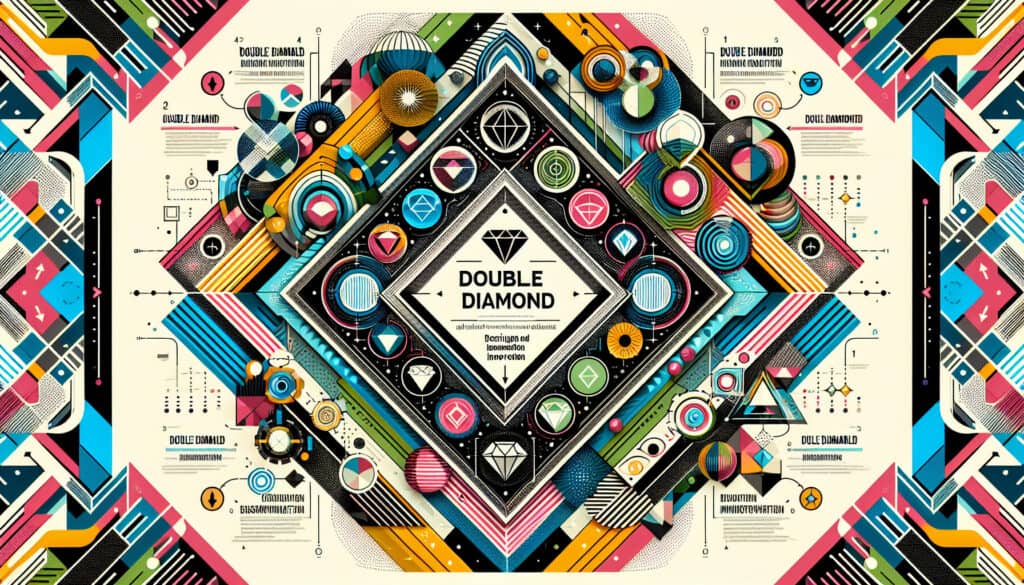A model that visualizes the design and innovation process, breaking it down into four distinct phases.
- 方法: 客户与营销, 构思, 产品设计
Double Diamond

Double Diamond
- 敏捷方法论, 创造力, 跨职能协作, 设计过程, 设计思维, 设计验证, 创新, 原型设计, 以使用者為中心的設計
目标
如何使用
- Developed by the UK's Design Council, it consists of two diamonds. The first diamond is about exploring the problem (Discover, Define) and the second is about creating the solution (Develop, Deliver). Each diamond involves a phase of divergent thinking followed by a phase of convergent thinking.
优点
- Provides a clear and simple map of the creative process; helps teams to understand where they are and what they should be focusing on; emphasizes the importance of understanding the problem before creating a solution.
缺点
- Can be an oversimplification of the often messy and non-linear reality of the design process; teams may apply it too rigidly.
类别
- 构思, 解决问题, 产品设计, 项目管理
最适合:
- Structuring the design process by first exploring the problem widely (diverge) and then focusing on a clear problem definition (converge), before creating and testing solutions.
The Double Diamond methodology is particularly advantageous in sectors such as product design, architecture, software development, and engineering, as it establishes a structured framework for addressing both broad and specific challenges. In the Discover phase, teams engage in various activities such as user interviews, market research, and competitor analysis, enabling them to gather a wide array of information that illuminates the core issues at hand. This phase is often driven by multidisciplinary teams comprising designers, engineers, marketers, and users to ensure diverse perspectives. During the Define phase, the insights collected help to crystallize the problem statement, allowing teams to focus on a specific challenge that needs addressing. As teams transition to the Develop phase, they rapidly generate multiple concepts through brainstorming sessions, prototyping, and user testing, fostering innovation by encouraging iteration based on user feedback. This experimentation often occurs in industries like consumer electronics and automotive, where real-time testing of prototypes can significantly influence design decisions. Finally, the Deliver phase involves finalizing the product or solution, which may include aspects like marketing strategies and product launch activities. In this phase, collaboration between designers, engineers, and marketing teams is often vital to ensure a coherent and appealing offering in the market. The Double Diamond methodology aligns well with agile practices, as it encourages regular review and adjustment, allowing teams to be responsive to changing user needs and market dynamics throughout the design and development cycles.
该方法的关键步骤
- Conduct extensive research to understand user needs and market context.
- Identify and articulate the core problems or challenges based on insights.
- Develop a clear problem statement that guides the design efforts.
- Generate a wide array of ideas and potential solutions through brainstorming.
- Prototype the most promising ideas to visualize solutions.
- Test prototypes with users to gather feedback and identify improvements.
- Refine solutions based on user feedback and iterate as needed.
- Implement solutions, ensuring they align with user needs and business goals.
- Launch the final product and monitor its performance in the market.
专业提示
- Involve multidisciplinary teams during the Discover phase to enhance understanding of the problem from various angles and expertise.
- Utilize iterative prototyping in the Develop phase, allowing frequent refinements based on user feedback to improve the design progressively.
- Establish clear metrics for success during the Define phase, ensuring that all team members are aligned on objectives and can measure the effectiveness of solutions.
历史背景
1949
1950
1950
1960
1960
1960
1960
1940
1950
1950
1958
1960
1960
1960
1960
(如果日期不详或不相关,例如 "流体力学",则对其显著出现的时间作了四舍五入的估计)。















相关文章
肌肉骨骼不适调查表
多变量测试(MVT)
多元回归分析
动作捕捉系统
MoSCoW 方法
情绪中值测试